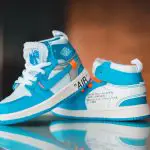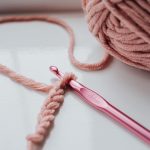Pilling in your workout clothes made from Lycra and spandex happens due to friction during exercise. As you move, the fabric rubs against your skin and surfaces, loosening fibers. Tight fits amplify this friction, especially during high-impact activities. Washing methods also play a role; hot water and rough cycles increase pilling. To combat this issue, you can adopt specific washing and drying strategies, along with choosing the right fabrics. Discover more about prevention and solutions!
Table of Contents
Key Takeaways
- Lycra and spandex are synthetic fibers, which are more prone to pilling due to friction during workouts.
- High-impact activities increase friction, causing workout clothes to pill more quickly.
- Tight-fitting workout clothes create stress points, enhancing friction and increasing pilling risk.
- Washing methods like hot water and rough cycles can exacerbate pilling on these fabrics.
- Air drying and gentle washing can help reduce pilling and extend the life of workout clothes.
Causes of Pilling in Workout Fabrics
While you might love your workout clothes for their comfort and style, pilling can quickly turn them into an eyesore. Pilling often occurs due to friction, especially during high-impact activities like running or weightlifting. As you move, your clothes rub against your skin and other surfaces, causing fibers to loosen and clump together.
Additionally, washing your workout gear in hot water or using a rough cycle can exacerbate this issue. Fabrics like fleece or blends with synthetic materials are particularly prone to pilling.
Even the way you store your clothes matters; tightly packed garments can rub against one another and create those pesky pills. Understanding these causes can help you take steps to minimize pilling and keep your gear looking fresh.
The Role of Fabric Composition
The composition of the fabric you choose for your workout clothes plays an essential role in how prone they’re to pilling.
Different materials have unique properties that affect durability and wear. Here are three key factors to evaluate:
- Fiber Type: Natural fibers, like cotton, tend to pill less than synthetic fibers, such as polyester and nylon, which are more susceptible to pilling due to their smoothness and strength.
- Blends: Fabrics that combine synthetic and natural fibers can offer a balance, enhancing comfort while reducing pilling potential.
- Weight and Density: Heavier, denser fabrics generally resist pilling better than lightweight, loosely woven options, making them a smart choice for high-intensity workouts.
Impact of Friction and Wear
As you engage in your workouts, the friction generated between your clothing and your body, as well as against surfaces like gym equipment, can greatly contribute to pilling.
Each movement causes your fabric to rub against itself and other materials, leading to tiny fibers breaking loose. Over time, this wear and tear leads to the formation of those annoying little balls of fuzz.
The intensity of your workouts can also play a role; high-impact activities create more friction, increasing the chances of pilling.
High-impact workouts generate more friction, significantly raising the likelihood of pilling on your activewear.
Even the type of exercises you do—like floor workouts versus running—can affect how your clothes wear.
To minimize pilling, consider choosing smoother fabrics or varying your workout routine to reduce consistent friction on the same areas.
How Washing and Drying Affect Pilling
When it comes to pilling, how you wash and dry your workout clothes can make a big difference.
Using the right washing methods and drying techniques can help minimize wear and tear.
Let’s explore how these practices can keep your gear looking fresh.
Washing Methods Impact
Although you might think all washing methods are created equal, the way you clean your workout clothes can greatly influence pilling.
To keep your Lycra and Spandex looking fresh, follow these tips:
- Turn Inside Out: Washing your clothes inside out reduces friction and protects the outer fibers from snagging.
- Use a Gentle Cycle: Opt for a delicate cycle to minimize agitation, which can contribute to pilling.
- Cold Water Wash: Washing in cold water is gentler on fabrics and helps prevent wear and tear.
Drying Techniques Matter
Drying techniques play an essential role in preventing pilling on your workout clothes. Using high heat in the dryer can damage the fibers, leading to more pilling. Instead, try air drying or using a low heat setting to preserve your garments. Here’s a quick comparison of drying methods:
| Drying Method | Effect on Pilling | Recommendation |
|---|---|---|
| High Heat Dryer | Increases pilling | Avoid |
| Low Heat Dryer | Minimal pilling | Preferred |
| Air Drying | Least pilling | Best option |
The Influence of Tight Fits
When you wear tight-fitting workout clothes, you’re increasing friction levels against your skin and equipment.
This added pressure can create stress points in the fabric, leading to pilling over time.
Plus, the moisture from sweat can further weaken the fibers, making them more prone to wear and tear.
Increased Friction Levels
Tight-fitting workout clothes can lead to increased friction during your exercises, which often results in unsightly pilling.
When your gear rubs against itself or your skin, it creates wear and tear that can damage the fabric.
Here are three common scenarios where friction plays a significant role:
- High-Intensity Workouts: Activities like running or cycling can cause constant movement, increasing friction on your clothes.
- Weightlifting: When you lift weights, your clothing can rub against the equipment, leading to friction and potential pilling.
- Yoga or Stretching: As you move through poses, the stretching can create friction points that wear down the fabric over time.
Being aware of these friction sources can help you choose your workout clothes wisely.
Fabric Stress Points
Friction isn’t the only factor contributing to pilling; fabric stress points also play a significant role, especially in tight-fitting workout clothes.
When you wear form-fitting gear, certain areas, like seams and joints, experience increased tension. This stress can weaken the fibers, leading to pilling over time.
Think about your movements during workouts—squats, lunges, or even stretches. Each of these actions puts pressure on specific points, causing the fabric to rub against itself. As the fibers weaken, little balls of fabric form and become noticeable on the surface.
To minimize pilling, consider choosing workout clothes with reinforced seams or a looser fit. This way, you can reduce stress on the fabric and keep your gear looking fresh longer.
Moisture Impact on Fibers
Moisture can considerably impact the longevity of workout clothes, especially in those snug-fitting styles. When you sweat, the combination of moisture and friction can lead to pilling, which diminishes the look and feel of your gear.
Here are three ways moisture influences fibers:
- Increased Friction: Tight clothing traps sweat, causing fibers to rub against each other more intensely, leading to pilling.
- Weakened Fibers: Excess moisture can soften the fibers, making them more susceptible to wear and tear during your workouts.
- Drying Effects: When wet clothes dry, they can form rough edges that catch on surfaces, generating more pilling over time.
To extend the life of your workout clothes, consider moisture-wicking fabrics and guarantee proper care after each use.
Environmental Factors Contributing to Pilling
Environmental elements can play a significant role in the pilling of your workout clothes. Factors like humidity and temperature fluctuations can weaken the fibers, making them more prone to abrasion.
If you often work out in a humid environment, sweat can combine with dirt and debris, increasing friction and leading to pilling.
Additionally, washing your clothes in hard water can contribute to fiber damage, as minerals can cling to the fabric and create rough surfaces.
Exposure to sunlight can also deteriorate the fibers over time, further increasing the likelihood of pilling.
Finally, the surfaces you come into contact with during workouts, such as gym mats or rough equipment, can exacerbate the problem.
Prevention Strategies for Pilling
To keep your workout clothes looking their best and minimize pilling, you can adopt several effective prevention strategies.
Here are three simple tips:
- Choose Quality Fabrics: Opt for workout clothes made from higher-quality materials that are less prone to pilling, like nylon blends or tightly woven fabrics.
- Wash Gently: Always wash your activewear on a gentle cycle with cold water. Avoid using fabric softeners, as they can contribute to pilling.
- Air Dry: Instead of tossing your clothes in the dryer, air dry them. This reduces friction and helps maintain the integrity of the fibers.
Tools and Techniques for Removing Pilling
When it comes to tackling pilling on your workout clothes, having the right tools can make all the difference.
You can use effective fabric defuzzers or try gentle de-pilling techniques to restore your gear.
Let’s explore some of these handy options to keep your outfits looking fresh.
Effective Fabric Defuzzers
If you want your workout clothes to look fresh and new, using effective fabric defuzzers is essential for tackling pilling.
Here are three great options to evaluate:
- Fabric Shaver: This handheld device quickly removes pills with a rotating blade, making it perfect for larger areas.
- Lint Roller: A quick fix, this sticky roller can lift away loose fibers and small pills, keeping your clothes looking neat.
- Pumice Stone: Gently rubbing a pumice stone over your fabric can effectively snag and pull away pills without damaging the material.
Gentle De-pilling Techniques
After employing effective fabric defuzzers, you might still want to explore gentle de-pilling techniques to keep your workout clothes in top shape.
One simple method is to use a fine-toothed comb. Gently brush the fabric in one direction to lift the pills without damaging the fibers.
Another option is to use a lint roller or sticky tape to lift away loose pills easily.
If you prefer a more hands-on approach, try using a sweater stone or pumice stone, which can gently rub away the pills without harming the material.
Finally, always wash your clothes inside out and in a gentle cycle to minimize future pilling.
With these techniques, you’ll prolong the life of your favorite workout gear.
Fabrics That Resist Pilling
Choosing the right fabric can make all the difference in your workout clothes, especially when it comes to pilling.
Selecting the appropriate fabric is crucial for workout clothes, particularly in preventing pilling.
To keep your gear looking fresh and new, opt for these pilling-resistant materials:
- Nylon: Known for its durability, nylon resists wear and tear, making it a great choice for high-intensity workouts.
- Polyester: This synthetic fiber is lightweight and strong, providing excellent resistance to pilling while drying quickly.
- Merino Wool: Soft and breathable, merino wool naturally resists pilling and offers moisture-wicking properties, keeping you comfortable during your workout.
The Aesthetic and Functional Impact of Pilling
While workout clothes are designed for performance and comfort, pilling can greatly detract from both their aesthetic appeal and functionality. When you notice those pesky little balls of fabric, it can make your favorite leggings or tops look worn and unkempt, impacting your confidence during workouts.
Pilling can also affect how your clothes perform; those raised fibers can create friction, leading to discomfort or chafing as you move. Additionally, pilled fabric may lose its moisture-wicking properties, making it less effective at keeping you dry.
Ultimately, keeping your workout gear looking fresh not only boosts your motivation but also guarantees you’re getting the best performance possible from your clothing. So, it’s worth addressing pilling promptly.
Frequently Asked Questions
Can Specific Brands Reduce Pilling in Workout Clothes?
Certain brands focus on fabric quality and durability, which can help reduce pilling in workout clothes. Look for options with higher denier counts or those specifically designed to resist wear and tear during intense activities.
How Often Should I Replace Pilling Workout Gear?
You should replace pilling workout gear when the fabric’s integrity and appearance diminish. Typically, consider replacing items every 6-12 months, depending on usage. Regular assessments help guarantee your gear performs at its best during workouts.
Do Fabric Softeners Help Reduce Pilling?
When it comes to pilling, using fabric softeners might seem like a silver bullet, but they can actually make things worse. Stick to washing your gear with care to keep it looking its best.
Is Pilling More Common in Low-Cost Workout Clothes?
Yes, pilling is often more common in low-cost workout clothes. Cheaper fabrics typically lack the durability and quality of higher-end materials, making them more susceptible to wear and tear during your workouts.
Can Pilling Be Prevented With Proper Storage?
Yes, pilling can be prevented with proper storage. Keep your workout clothes in a cool, dry place, away from rough surfaces. Avoid folding them tightly, which can create friction and lead to pilling over time.
- Does Chiffon Fabric Stink - July 15, 2025
- Does Chiffon Fabric Affect the Economy - July 15, 2025
- Does Cotton Fabric Have a Nap - July 15, 2025







